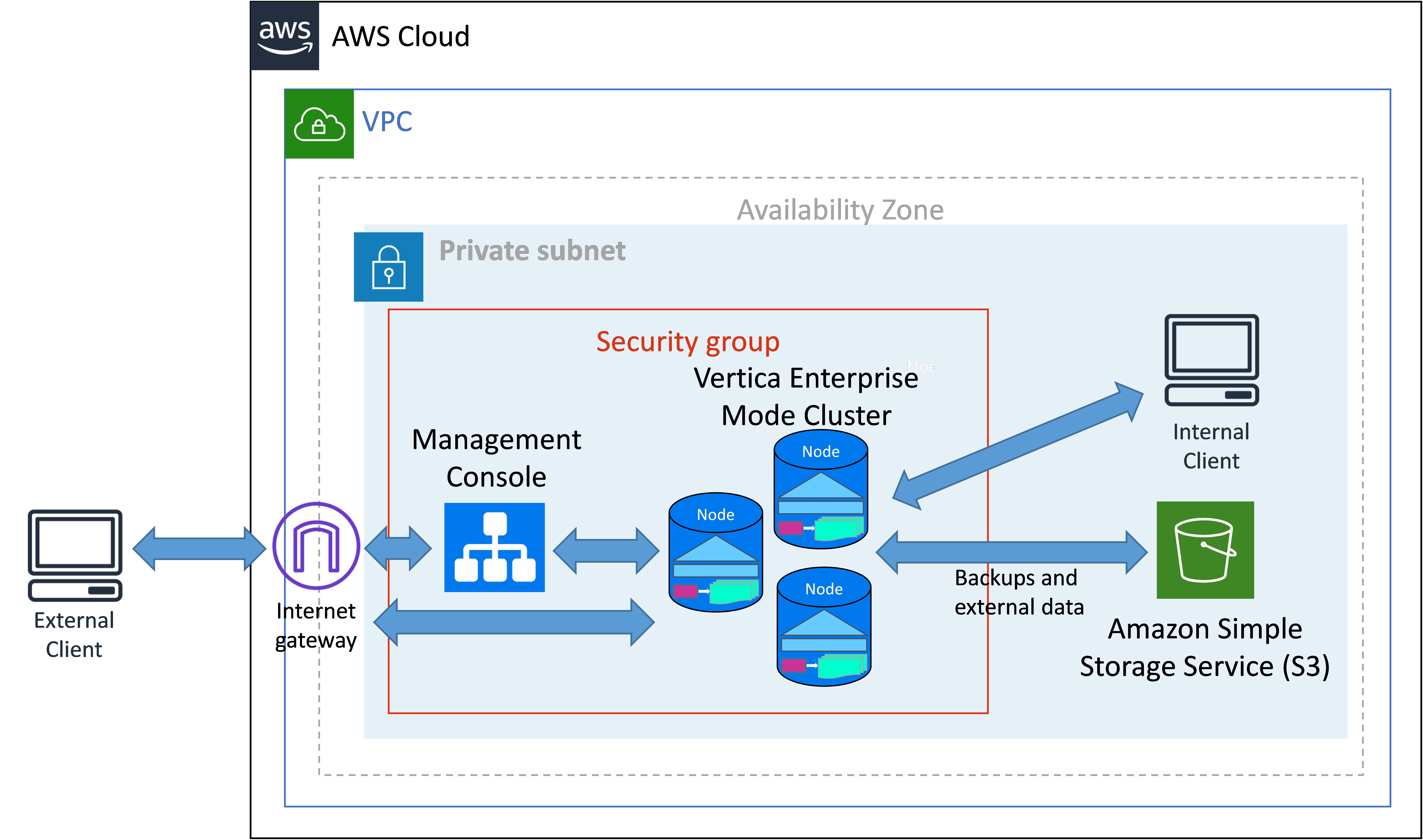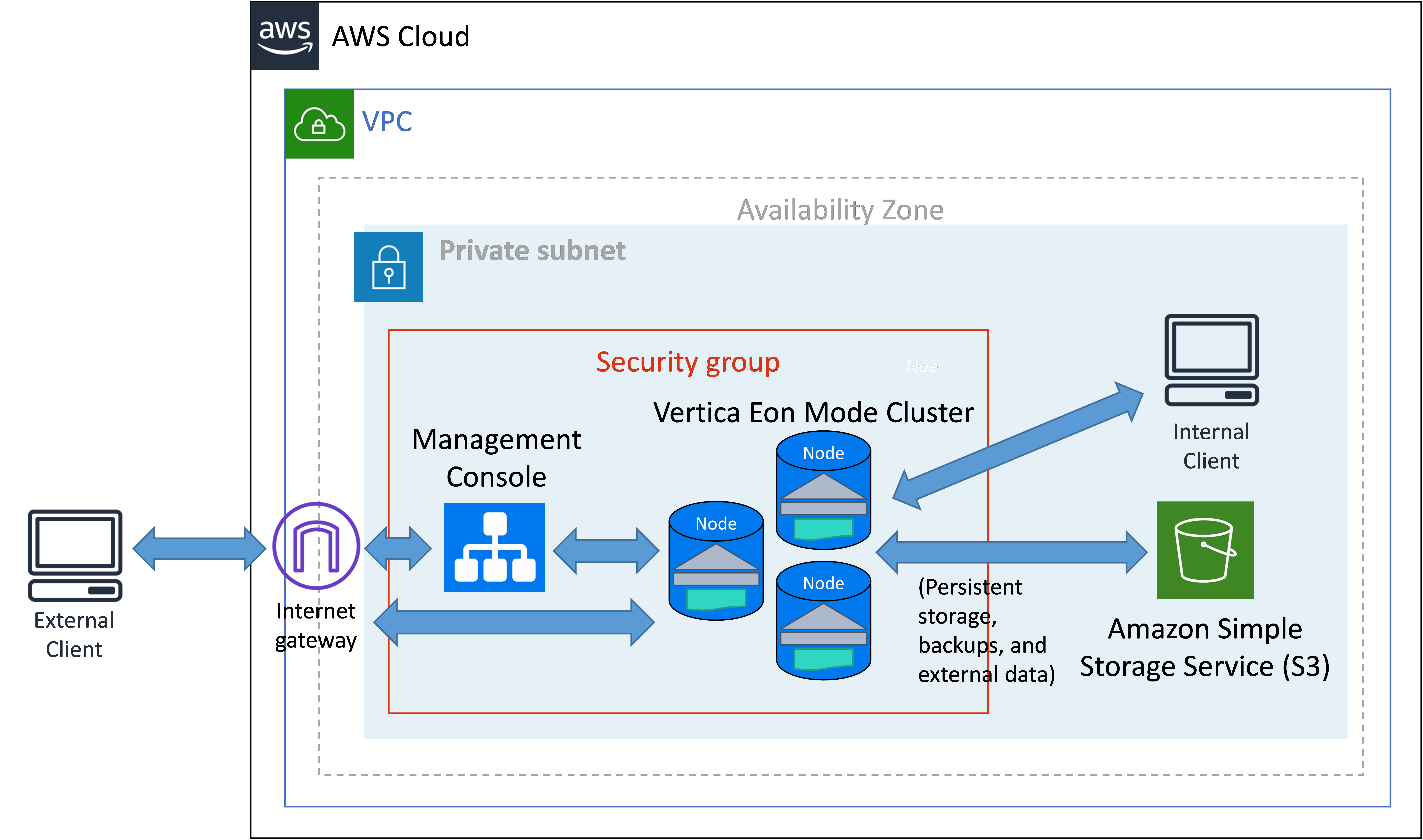Vertica on Amazon Web Services
Welcome to the Vertica on Amazon Web Services (AWS) guide. This section explains how to create and manage Vertica clusters on AWS.
When you launch a cluster on AWS resources and are ready to create your database, consider whether to run it in Eon Mode or Enterprise Mode. The differences in these two modes lay in their architecture, deployment, and scalability:
-
The Enterprise Mode database architecture distributes data across local nodes, and works on-premise or in the cloud. Create an Enterprise Mode database on a cluster of predetermined size, which is good for running large queries quickly. Because it persistently stores its data locally, you do not need access to shared storage on Amazon S3 to use an Enterprise Mode database.

-
The Eon Mode database architecture leverages the flexibility of EC2 instances and the persistence of Amazon S3. Eon Mode databases are ideal when you want to frequently scale up your cluster in order to run many short, concurrent queries. Because an Eon Mode database stores its data in a persistent location outside of its local nodes, you can rapidly adjust the size of your cluster without interrupting ongoing workloads.

Eon Mode separates the computational processes from the communal storage layer of your database. This separation gives you the ability to store your data in a single location (on AWS) and elastically vary the number of compute nodes connected to that location according to your computational needs.
Vertica provides CloudFormation Templates (CFTs) through the AWS Marketplace. These CFTs also deploy Management Console.
For detailed information about which CFT to use, see Creating a Database in Eon Mode .
After you provide parameters to the template, you create a stack to provision the AWS resources for your Vertica system. Now use Management Console (MC) to create and manage clusters and databases.
You can install an Eon Mode database using in-browser wizards provided by Management Console, available through the AWS Marketplace or using admintools. You can only create Eon Mode databases on clusters that reside on AWS resources.
See Using Eon Mode for more about Eon Mode database concepts.